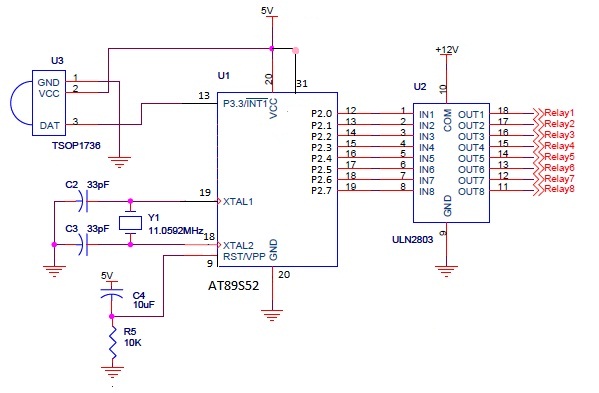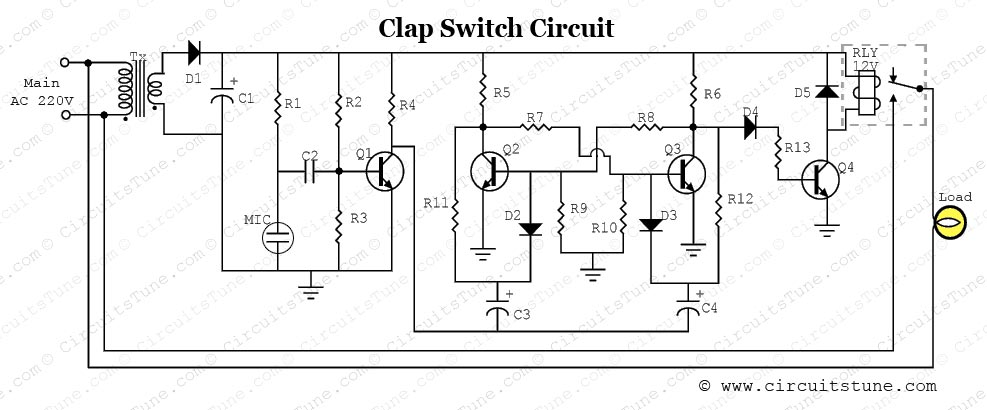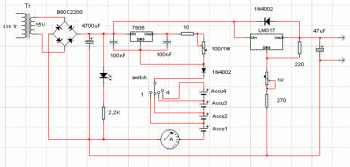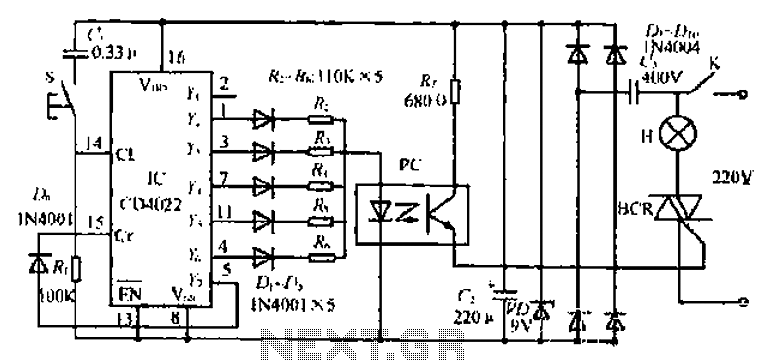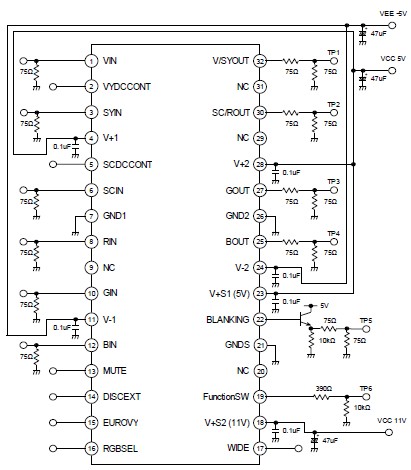
Differentiator Op Amp Circuit

The differentiator circuit is an application circuit derived from mathematical principles influenced by capacitor behavior. The circuit, as illustrated in the accompanying image, is a simple differentiator configuration. To derive the differentiator formula, the following sequence is used: Ic = Ib + If, where Ib is set to 0, resulting in Ic = If, which represents the difference between the inverting input and the non-inverting input (v1 and v2). The voltage amplification in this scenario is substantial. In the application of this differentiator circuit using an operational amplifier (op-amp), modifications include the addition of resistors and capacitors, which serve to filter the input signal. The differentiator circuit depicted in the subsequent image is intended for this purpose. When the input signal exceeds a certain frequency (fa), the output will equal the input, causing the differentiator function to behave like a standard circuit. The circuit diagram, typically referred to as drawing 226, is commonly used for integrated circuit applications alongside other configurations. The values of R1, C1, RF, and CF are determined based on specific conditions.
The differentiator circuit utilizes an operational amplifier to produce an output voltage that is proportional to the rate of change of the input voltage. This characteristic is particularly useful in applications requiring the detection of rapid changes in signal levels, such as in signal processing and control systems.
In a typical differentiator circuit, the input signal is applied to the inverting terminal of the op-amp through a capacitor (C1), while a resistor (R1) connects the output to the inverting input. The non-inverting terminal is grounded. The output voltage (Vout) can be expressed as Vout = -R1 * C1 * (dVin/dt), where Vin is the input voltage and dVin/dt is the derivative of the input voltage with respect to time.
The component values, R1 and C1, must be carefully selected to ensure the desired frequency response and stability of the circuit. The feedback resistor (RF) and capacitor (CF) may also be included to enhance performance, particularly in high-frequency applications, by compensating for phase shifts and improving bandwidth.
It is important to note that the differentiator circuit can amplify high-frequency noise, which may lead to instability. Therefore, appropriate filtering techniques or frequency limitations should be implemented to mitigate these effects. The circuit may also need to be designed with considerations for power supply voltages, op-amp characteristics, and load conditions to ensure reliable operation across the intended application range.
In summary, the differentiator circuit is a versatile tool in electronic design, providing essential functionality for applications that require responsive signal processing and rapid change detection. Proper design and component selection are critical to achieving optimal performance.Differentiator circuit is application circuit from playable mathematics formula (influenced) from capacitor activity. The circuit like at picture under this with simple circuit from differentiator. To get formula differentiator, the sequence is as following: Ic = Ib + If and during value Ib = 0 hence Ic = If difference from inverting input and non
-inverting input (v1 and v2) be the null and voltage amplification is very big. At the application of differentiator circuit this op-amp there are a few changes that is addition of prisoner and capacitor which the function input signal filter to. Like seen at picture following is differentiator circuit intended. If, when input signal exceeds frequency fa hence result of output would equal to result of input, alias function of the differentiator circuit shall no longer again but as ordinary.
While to drawing 226 usually applied for application integrated circuit with other application. Condition calculation value R1, C1, RF, CF is as according to condition that is: 🔗 External reference
The differentiator circuit utilizes an operational amplifier to produce an output voltage that is proportional to the rate of change of the input voltage. This characteristic is particularly useful in applications requiring the detection of rapid changes in signal levels, such as in signal processing and control systems.
In a typical differentiator circuit, the input signal is applied to the inverting terminal of the op-amp through a capacitor (C1), while a resistor (R1) connects the output to the inverting input. The non-inverting terminal is grounded. The output voltage (Vout) can be expressed as Vout = -R1 * C1 * (dVin/dt), where Vin is the input voltage and dVin/dt is the derivative of the input voltage with respect to time.
The component values, R1 and C1, must be carefully selected to ensure the desired frequency response and stability of the circuit. The feedback resistor (RF) and capacitor (CF) may also be included to enhance performance, particularly in high-frequency applications, by compensating for phase shifts and improving bandwidth.
It is important to note that the differentiator circuit can amplify high-frequency noise, which may lead to instability. Therefore, appropriate filtering techniques or frequency limitations should be implemented to mitigate these effects. The circuit may also need to be designed with considerations for power supply voltages, op-amp characteristics, and load conditions to ensure reliable operation across the intended application range.
In summary, the differentiator circuit is a versatile tool in electronic design, providing essential functionality for applications that require responsive signal processing and rapid change detection. Proper design and component selection are critical to achieving optimal performance.Differentiator circuit is application circuit from playable mathematics formula (influenced) from capacitor activity. The circuit like at picture under this with simple circuit from differentiator. To get formula differentiator, the sequence is as following: Ic = Ib + If and during value Ib = 0 hence Ic = If difference from inverting input and non
-inverting input (v1 and v2) be the null and voltage amplification is very big. At the application of differentiator circuit this op-amp there are a few changes that is addition of prisoner and capacitor which the function input signal filter to. Like seen at picture following is differentiator circuit intended. If, when input signal exceeds frequency fa hence result of output would equal to result of input, alias function of the differentiator circuit shall no longer again but as ordinary.
While to drawing 226 usually applied for application integrated circuit with other application. Condition calculation value R1, C1, RF, CF is as according to condition that is: 🔗 External reference
